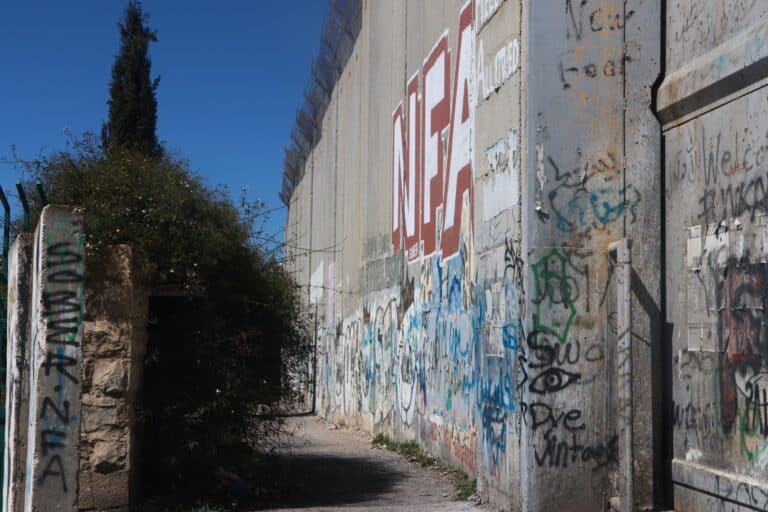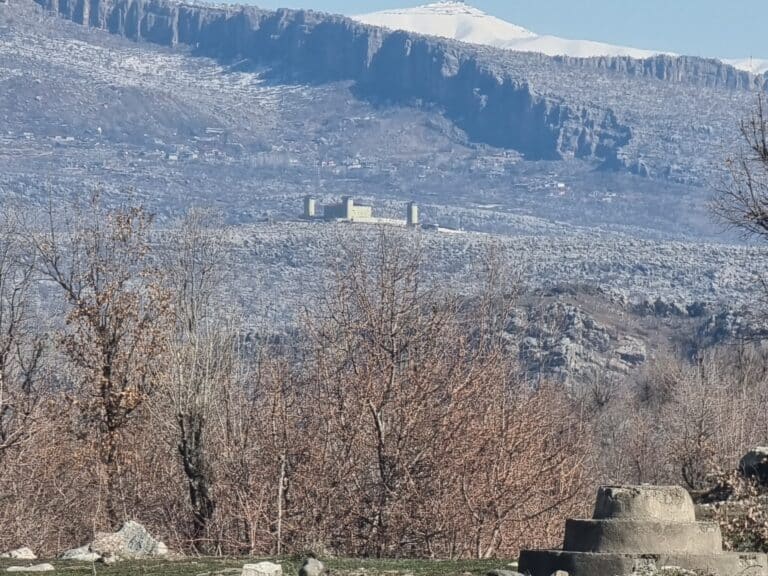The increasing harm that the Turkish Military’s cross-border operations in northern Iraq are causing to the civilian population is an issue of concern. It requires joint actions to be taken on local, regional, and international levels.
This report presents new comprehensive findings of research conducted by members of non-governmental organisations documenting civilian harm and working in peacebuilding and protection of human rights. The report highlights the numbers and identities of civilians and non-belligerents who were killed and wounded due to Turkish Military actions within the territory administered by the Kurdistan Regional Government and the Iraqi governorate of Ninewa. The report analyses the contexts of the incidents leading to civilian harm and explores other impacts: the destruction of villages, homes, health clinics, farmlands, and civilian livelihoods.
The report covers the timeframe starting from 1 August 2015, when the first civilians were killed and wounded by multiple Turkish airstrikes inside a village of Zergali following the collapse of the peace negotiations between the Government of the Republic of Turkey and the Kurdistan Workers’ Party (PKK), up until the end of 2021.
On 17 April 2022, a new military operation was launched by the Turkish Armed Forces (TAF) codenamed Claw-Lock within the territory of Iraqi Kurdistan. Claw-Lock follows a certain pattern of operations that the TAF has conducted in northern Iraq since 2018. The operations consist of large-scale aerial bombardments that were followed by the deployment of special forces on mountain ranges in elevated areas up to 12-15 km south of the Turkish border, where observation posts and bases were built. As a result, the civilian population living and producing income in the adjacent valleys have been shelled by artillery fire and forced into displacement or life under Turkish military control.
Download report in English | Kurdish | Arabic
End Cross-border Bombing is a campaign born in 2020, and is an international coalition of local and international NGOs that have the aim to advocate and create awareness on the topic of bombardaments in Northern Iraq. Coalition members include: Iraqi Civil Society Solidarity Initiative, Community Peacemaker Teams, Iraq Body Count, CODEPINK, NOVACT, Un Ponte Per, Solidarity with Kurdistan/Solkurd. The production and dissemination of this report was led from the Iraq Civil Society Solidarity Initiative with significant contributions from other coalition members.
Key Findings
The Turkish Armed Forces have conducted at least 88 cross-border aerial, artillery, and ground attacks which caused civilian deaths and injuries within the borders of Iraq between 1 August 2015 and 31 December 2021.
Despite the Turkish Government’s claims of solely targeting the insurgents of the Kurdistan Workers’ Party (PKK) and their affiliated groups, the eighty-eight attacks by the Turkish Armed Forces have caused the death of 98 to 123 civilians and non-belligerents of the conflict and injury of 134 to 161 civilians and non-combatants. The highest number of incidents occurred in the last two years of the conflict, with 20 incidents in 2020 and 20 in 2021.
Despite such a high number of civilian casualties resulting from cross-border military actions by a NATO member on a neighbouring state along with impacting an area spanning four Iraqi Governorates
of Dohuk, Erbil, Sulaymaniyah, and Ninewa, there exists a very concerning gap in the documentation of the civilian harm that these military actions have caused. Consequently, there appears to be a lack of serious political action to protect civilians from harm and a lack of support structures available for the impacted population.
111+ civilian casualties in populated areas (cities, towns and villages). The Turkish Armed Forces (TAF) used fighter jets, drones, helicopters, artillery, or other weapons (small arms, light and heavy weapons) in thirty-seven incidents causing civilian death or injury. Targeting populated cities, towns, and villages, TAF destroyed or damaged homes, schools, health clinics, grocery stores, drinking water distribution projects, electric power lines, and places of worship. In these attacks, at least 39 civilians (including four children) were killed, and 72 civilians (including ten children) were injured. Among the dead and wounded were health workers, small business owners, shopkeepers, students, municipal workers, and de-miners clearing mines left by ISIS. Some of the attacks were conducted as far as 115 km south of the Turkish border.
56+ civilian casualties among farmers and livestock owners. The TAF attacked twenty-five times (with fifteen airstrikes, nine artillery shelling, and one other weapon) farmers tending to their land or beekeeping, shepherds grazing livestock, and civilians fishing. As a result, a minimum of 35 were killed and 21 wounded, one of the injured shepherds being a sixteen-year-old Yezidi boy. Agricultural and livestock farming form the foundation of sustenance for several thousand families living in the bombarded areas.
23+ civilian casualties from attacks on civilian vehicles. Vehicles carrying civilians were targeted 10 times by Turkish forces: by drones and fighter jets (eight times), a helicopter (one time), and other weapons (one time). These bombardments killed 13 civilians (including one child) and wounded 10 (including two children). In one incident, a family returning home from their farm was targeted by two drone strikes, the TAF killed two adult members and one child, and five were wounded (including two children).
Nine civilian casualties from attacks on foragers. In four incidents (two airstrikes and two artillery shelling), four people were killed (including a 19-year-old female student) and five injured while foraging wild plants in the mountains. Many families supplement their food and economic income by collecting herbs and wild plants in the late Spring-early Summer months.
Up to 20 civilian casualties in the Makhmur Camp for Kurdish refugees from Turkey. The TAF conducted at least four airstrikes inside Makhmur camp, which hosts Kurdish refugees from Turkey and is located 165 km south of the Turkish border. In these attacks, 10 people were killed and 10 wounded. However, due to the presence of the PKK, which has been protecting some 11,000 camp residents from ISIS and other armed groups, the civilian status of seven of the killed and five of the injured could not be independently corroborated.
38+ further civilian casualties in various specific contexts. In the remaining eight incidents, 17 people were killed (including one child) and 21 injured (including one child). For example, a 14-year-old boy was killed, and the Turkish soldiers also injured between 10 and 15 people during a protest of residents against a Turkish military base. Next, an 11-year-old girl was injured when a Turkish drone crashed into a field in her village. Then, four male friends, two of whom were professional football players, were injured during a leisure trip by artillery fire. Further, two Iraqi Border Guards (IBG) commanders with their driver were killed, and at least one other officer of the IBG was injured when a Turkish drone targeted a negotiation meeting with the PKK members. Finally, in one incident, 13 Turkish citizens who were held captive by PKK were killed, likely due to Turkish airstrikes, or by PKK, according to a Turkish claim.
Demographics of civilian casualties
Among the killed in all incidents, 80 were identified as adult men, 13 as adult women, and six as male children. Among the injured, 41 were identified as adult men, 16 as adult women, and 14 were children (six female, six male, and two of unknown gender). The identities of other civilians who were reported to be killed and injured in the attacks were unfortunately not possible to be obtained in the research due to the lack of adequate documentation procedures and missing data that the governments and military forces would need to provide.
It is difficult, time-consuming and therefore uncommon for a record of civilian war victims to uncover such a high percentage of individuals’ names (over 85% in this case. See Appendix 2). Their names and identifying details (such as age, gender, family circumstances or profession) not only help to underline the humanity of the victims, but add to the reliability and specificity of data such as that collected here. Such efforts should be engaged in by all actors, including official ones.
Location of civilian casualties
In terms of the geographical distribution of the Turkish cross-border attacks, the Dohuk Governorate—which covers the most significant part of the Iraq/Turkey border— has experienced the highest number of civilian deaths (51 to 67) and injuries (61 to 73). In the Erbil Governorate, which covers the remaining area of the Iraq/Turkey border, 29 to 37 civilians and non-belligerent were killed and 35 to 43 wounded. In the Ninewa Governorate, 12 civilians were killed, and 16 to 22 civilians were injured. In the Sulaymaniyah Governorate, six to seven civilians were killed and 22 to 23 wounded.
Additional civilian impact
The report highlights the incidents that caused the death and injury of civilians. The number of Turkish Armed Forces attacks that burned farmland, killed livestock, destroyed and damaged homes and civilian infrastructure, and led to the abandonment of villages, extensive environmental damage, and trauma among the civilian population is exponentially higher.




